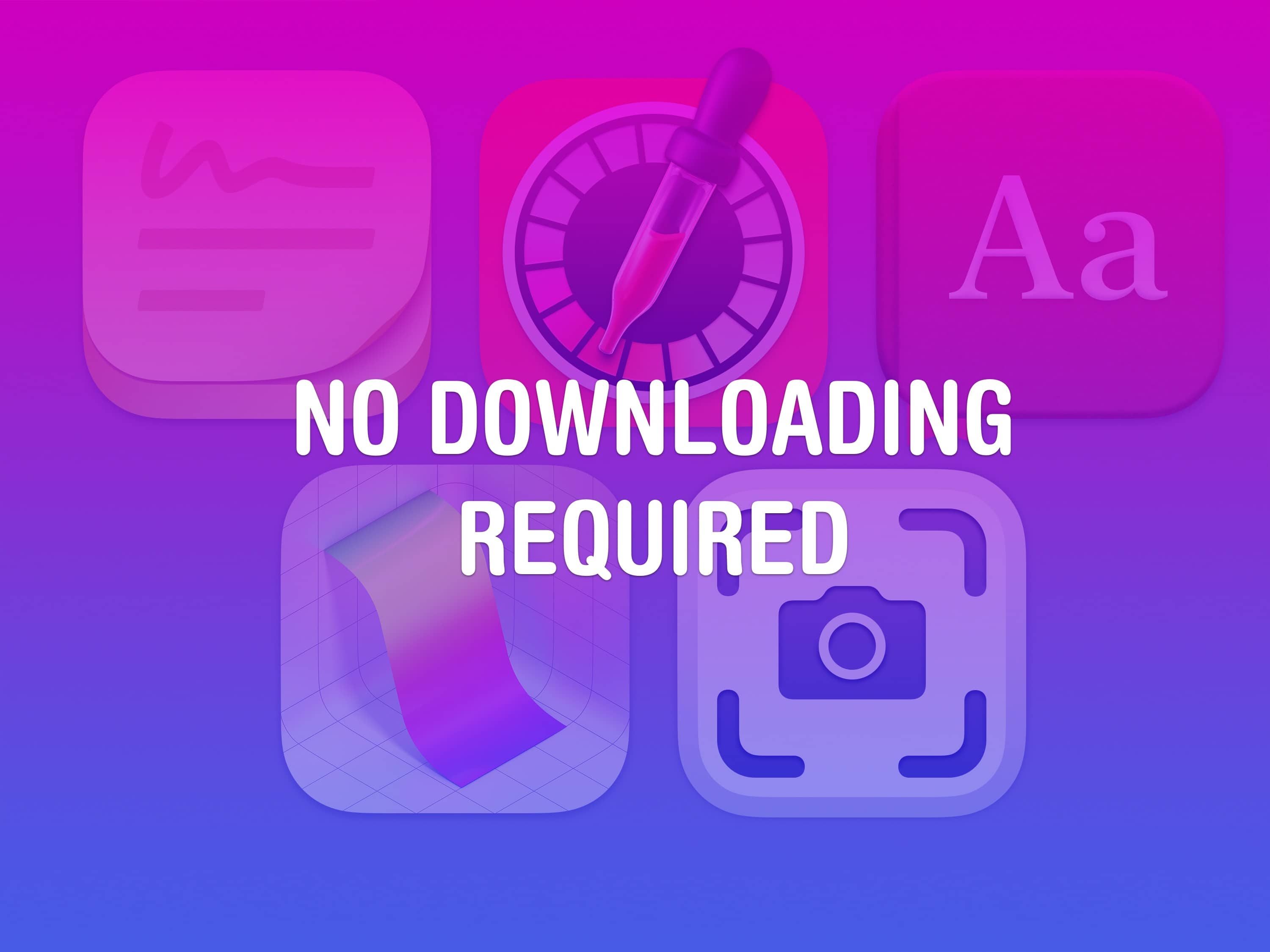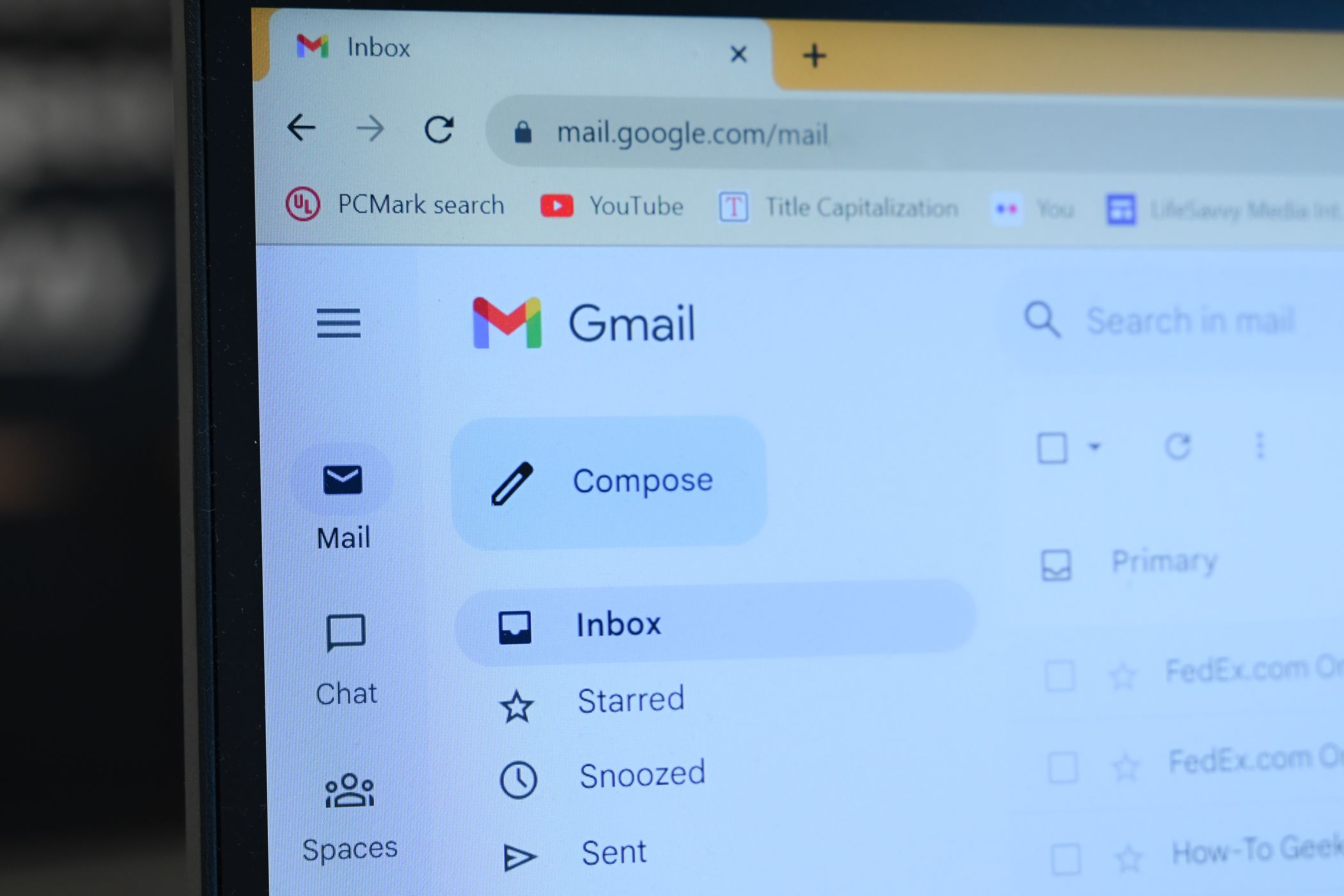
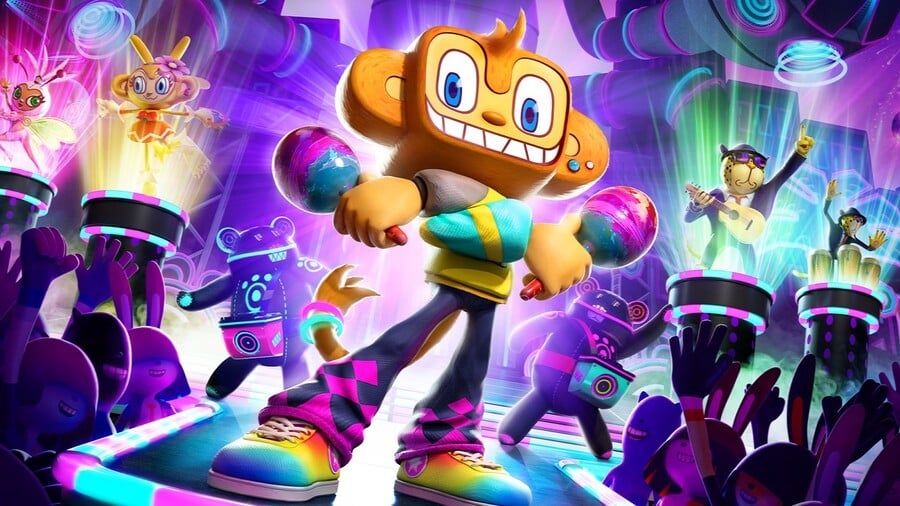
If you know your Sega history, then you most likely know — and love — the maraca-shaking monkey Amigo. Samba de Amigo was a cult hit on the Dreamcast back in 1999, and this little monkey rattled his way into many a heart over the years.
Laced with catchy Latin American music, pop songs, and a pair of maraca-shaped controllers, Samba de Amigo became a cult hit for its arcade-style gameplay and fun aesthetic. Incredibly, while it feels like Amigo has become a staple in Sega’s history — appearing in titles such as Sonic & Sega All-Stars Racing (and its Transformed sequel) — the sombrero-donning monkey’s debut game has never received a direct sequel, with Ver. 2000 launching in arcades and in Japan, and Samba de Amigo on Wii being an enhanced port.
But don’t worry, 2023 is the year of the retro return, and Samba de Amigo: Party Central sees Amigo take to the global stage. Sonic Team is bringing the beloved party music title back, and to tell us a little bit about the series’ history is director and producer at Sonic Team, Shun Nakamura.
Nakamura-san made his debut as a director on the original Samba de Amigo and has plenty of interesting tidbits to share about just how the series has changed from 1999 to today, along with some Smash Bros. desires and how TikTok has influenced this brand-new game…
Nintendo Life: Samba de Amigo is synonymous with the Dreamcast for many Sega fans. How did you come up with an idea for the game and the character of Samba?
Shun Nakamura, Sonic Team producer and director: Samba de Amigo was first created as an arcade game. At the time, it was all about cool music games, but for me, I was more into creating a game where we can forget ourselves and enjoy being fun-loving – a game where we can enjoy the sounds of karaoke or live music, rather than just playing music. That is why I started Samba de Amigo. Japanese people like to use maracas to liven up the atmosphere when they sing karaoke, and this experience led to the introduction of the maraca controllers. At the time, the Sonic team had no experience with arcade games, but we started this as an experimental project, and each time we presented the game, it was well received, which eventually led us to the Dreamcast version.
We decided on the character Amigo because we thought his cheerful image would match the brightness of the monkey character. The final touches were done by the character designer of the Sonic series.
Did you ever consider using other instruments in Samba de Amigo?
Actually, when Nintendo first showed us the Switch hardware, we thought about bringing back Samba, but we decided to change it up a bit and make something new, so we were working on another music game before the system’s launch. But for various reasons, that project didn’t work out. In that previous game, the concept was to control a large number of musical instruments, but the design, unfortunately, went in so many different directions, so it didn’t end up working out.
when Nintendo first showed us the Switch hardware, we thought about bringing back Samba, but we decided to change it up a bit and make something new
With this experience in mind, we decided to proceed with a Samba project instead, where we did not think about other instruments as we wanted to express something silly and enjoyable when using a single instrument. [Samba de Amigo: Party Central] also has a feature called ‘happenings’, which allows the player to enjoy various rhythm games in addition to the normal performance. I think this feature solves the problem of getting bored with playing the same instrument.
Amigo has made numerous cameo!!s and appearances in other Sonic Team games such as the Sega All-Star Racing series. What’s your dream cameo for the character?
Amigo sometimes appears in other games as a separate character, but never in connection with the storyline or anything like that, so I hope that in the future they will be able to be put in a key role. However, in order to do so, I think Amigo will have to become more famous, so I will try my best to make that happen.
Also, I enjoy Smash Bros., so I would like for Amigo to participate in that game as well. I think it would be interesting for Amigo to have these music-based attacks because no other character has that. Of course, I am joking!
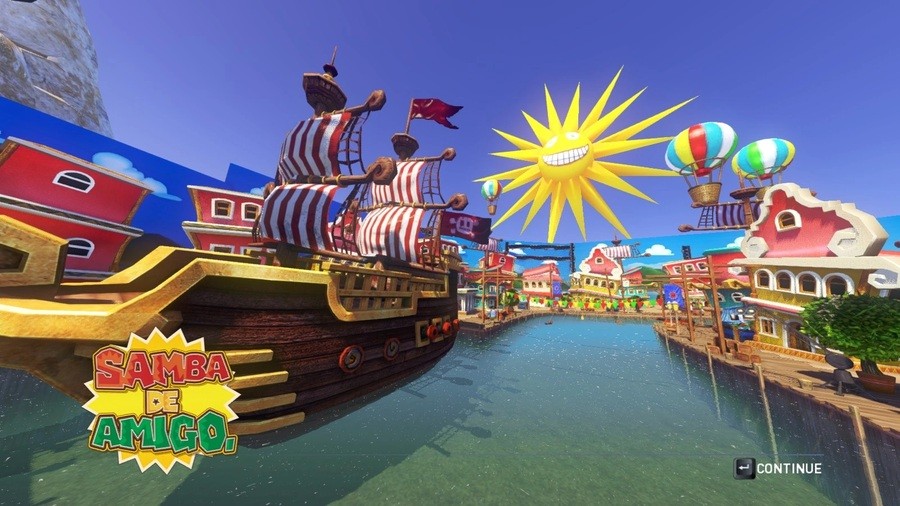
Why do you think Samba de Amigo has a cult following among Dreamcast fans?
Personally, I don’t know the real reason. However, I believe that those who like Samba de Amigo are those who enjoy having some light-hearted fun. This remains the most important part of this project, and it’s also the part that we have expanded upon. I think we were able to offer something that makes people feel that even just dancing with maracas is fun, but it also goes beyond that.
I think Amigo will have to become more famous, so I will try my best to make that happen.
In this game, we have this difficulty mode called CRAZY, which is somewhat different from the “difficulty of the game” you would normally see. With CRAZY, we wanted to find ways to get the player to really move their body to the rhythm. By the way, I haven’t told anyone this, but I named it after the CRAZY TAXI’s groove and CRAZY-ness. I hope that fans will support the new Samba in a cult-like way.
The newest entry in the franchise – Samba de Amigo: Party Central – is being billed as a follow-up to the original Dreamcast game. Why is now the time to revisit the series?
In recent years, I think there have been a lot of new remakes of past titles in the game industry. This Samba de Amigo was created with that trend in mind, with the idea that it would be more interesting if it were adapted to today’s market. The Joy-Con and VR controllers were a big part of this title, and while the Dreamcast version was fun with the separate maraca controllers, they were very expensive and could not be used by many people. This time, the hardware comes with the motion controllers, so I think many people will be able to enjoy the game with a low threshold.
In terms of content, we have maintained the base gameplay, while also making important changes that are in tune with the current era and that will make the game even more entertaining. It is not a simple music game, but rather an experience that allows everyone to enjoy the “silly fun” that only Samba can offer.
What influenced the decision to pivot to popular music for Party Central?
Originally, many fans expressed the desire to enjoy other genres of music in Samba de Amigo, even during past productions. Certainly, musical taste varies from person to person, so while putting together a collection of music from the same genre can give it a sense of unity, it also means you may not be able to pull in those who have other tastes. That’s why we made it a priority to broaden the number of genres featured in the game so that even more people can enjoy it.
we made it a priority to broaden the number of genres featured in the game so that even more people can enjoy it.
We moved even more in that direction by challenging ourselves to create more types of music with the DLC. We even included gospel music in the game’s original tracks, so we believe that players will enjoy all the new aspects of the song list. Of course, we always make sure to ask ourselves, “Can this song be enjoyed as a Samba song?”. We believe every song in the game has that fun groove that is unique to this series, so please do not worry.
At the same time, the “world setting” is also built around the fact that Amigo has stepped out of the environment of past games and become a beloved performer around the world. Although you may not normally pay attention to this kind of thing when playing a music game, we have prepared a variety of exciting situations, and we hope that you will be able to witness Amigo’s global debut.
Can you talk about any challenges you faced while developing the game for Switch?
As you can imagine, the most difficult part was adapting the Joy-Con controllers. In Party Central, there are these ‘rhythm balls’ that fly towards rings that are shown on both the upper, middle, and lower sides of the screen. The player’s goal is to shake the controllers in the direction of the target just as each rhythm ball passes through the target. That’s why we needed to make sure the Joy-Con’s responsiveness was in sync with the player, which ultimately proved challenging. We made a lot of adjustments to the Joy-Con settings right up until the very end. We also tested this with a lot of different people and received their feedback throughout the process.
How do you think new audiences will react to Samba de Amigo’s return?
When thinking about the right approach to the “silly fun” concept, I looked at TikTok as a place that contains similar elements. TikTok has a lot of videos that have creators who perform with different kinds of music, and those watching them will laugh and just have a great time. This is actually close to what we were originally aiming for with the first Samba. Here, we focused on creating a game that would be enjoyable for younger people by mixing the new Samba with certain aspects of TikTok.
we focused on creating a game that would be enjoyable for younger people by mixing the new Samba with certain aspects of TikTok.
One example is the ‘happening’ element I talked about earlier. Usually, in music games, you play what you are supposed to play in a certain way – basically, things are very straightforward. But in this game, we decided to incorporate a roulette element as we wanted to emphasize the spontaneous moments and the joy that comes from it rather than following the normal rules. I hope that Samba, which was once considered a cult classic, will become a major music game in the modern era.
I also want to note, that for those who want to enjoy Party Central as a traditional music game, whether for casual play or when competing for a high score, you can always turn the ‘happening’ settings off in the options.
Party Central will be getting a few Sonic the Hedgehog songs. Are there any other Sega franchises that you want to include music from in the future?
Many of Sega’s songs are loved by its fans, and we have a tremendous number of tracks we would like to use. This time, we have prepared music from Ryu Ga Gotoku (Yakuza / Like a Dragon series), Space Channel 5: Part 2, and Rhythm Thief & the Emperor’s Treasure, and we would like to expand this even further. Please look forward to the songs we have already prepared, and if you send us your requests via Twitter and elsewhere, we may be able to increase the chances of even more music…
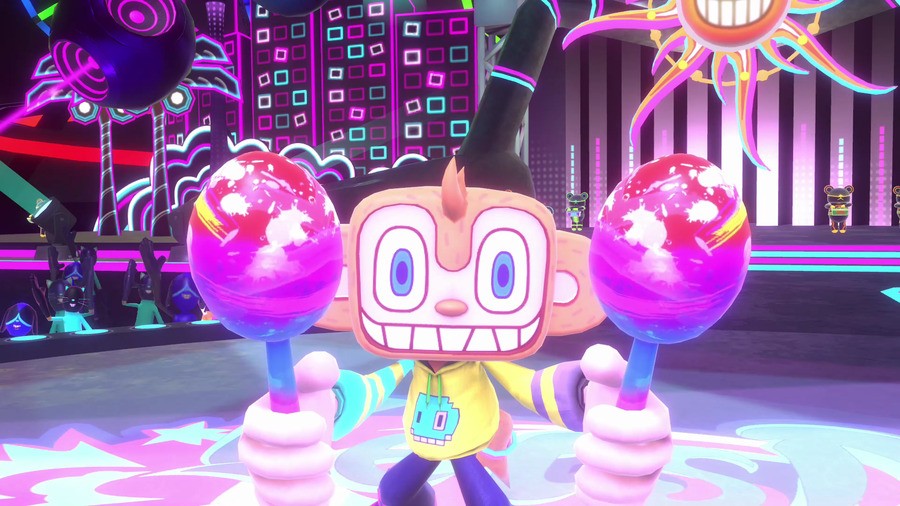
This interview has been lightly edited for clarity.
Thank you to the team at Sega and to Namakura-san for taking the time to answer our questions. Samba de Amigo: Party Central is out on Nintendo Switch on 31st August. A free demo is available to download now from the Switch eShop.
Will you be joining Amigo’s return later this month? Shake it down in the comments.

If you know your Sega history, then you most likely know — and love — the maraca-shaking monkey Amigo. Samba de Amigo was a cult hit on the Dreamcast back in 1999, and this little monkey rattled his way into many a heart over the years.
Laced with catchy Latin American music, pop songs, and a pair of maraca-shaped controllers, Samba de Amigo became a cult hit for its arcade-style gameplay and fun aesthetic. Incredibly, while it feels like Amigo has become a staple in Sega’s history — appearing in titles such as Sonic & Sega All-Stars Racing (and its Transformed sequel) — the sombrero-donning monkey’s debut game has never received a direct sequel, with Ver. 2000 launching in arcades and in Japan, and Samba de Amigo on Wii being an enhanced port.
But don’t worry, 2023 is the year of the retro return, and Samba de Amigo: Party Central sees Amigo take to the global stage. Sonic Team is bringing the beloved party music title back, and to tell us a little bit about the series’ history is director and producer at Sonic Team, Shun Nakamura.
Nakamura-san made his debut as a director on the original Samba de Amigo and has plenty of interesting tidbits to share about just how the series has changed from 1999 to today, along with some Smash Bros. desires and how TikTok has influenced this brand-new game…
Nintendo Life: Samba de Amigo is synonymous with the Dreamcast for many Sega fans. How did you come up with an idea for the game and the character of Samba?
Shun Nakamura, Sonic Team producer and director: Samba de Amigo was first created as an arcade game. At the time, it was all about cool music games, but for me, I was more into creating a game where we can forget ourselves and enjoy being fun-loving – a game where we can enjoy the sounds of karaoke or live music, rather than just playing music. That is why I started Samba de Amigo. Japanese people like to use maracas to liven up the atmosphere when they sing karaoke, and this experience led to the introduction of the maraca controllers. At the time, the Sonic team had no experience with arcade games, but we started this as an experimental project, and each time we presented the game, it was well received, which eventually led us to the Dreamcast version.
We decided on the character Amigo because we thought his cheerful image would match the brightness of the monkey character. The final touches were done by the character designer of the Sonic series.
Did you ever consider using other instruments in Samba de Amigo?
Actually, when Nintendo first showed us the Switch hardware, we thought about bringing back Samba, but we decided to change it up a bit and make something new, so we were working on another music game before the system’s launch. But for various reasons, that project didn’t work out. In that previous game, the concept was to control a large number of musical instruments, but the design, unfortunately, went in so many different directions, so it didn’t end up working out.
when Nintendo first showed us the Switch hardware, we thought about bringing back Samba, but we decided to change it up a bit and make something new
With this experience in mind, we decided to proceed with a Samba project instead, where we did not think about other instruments as we wanted to express something silly and enjoyable when using a single instrument. [Samba de Amigo: Party Central] also has a feature called ‘happenings’, which allows the player to enjoy various rhythm games in addition to the normal performance. I think this feature solves the problem of getting bored with playing the same instrument.
Amigo has made numerous cameo!!s and appearances in other Sonic Team games such as the Sega All-Star Racing series. What’s your dream cameo for the character?
Amigo sometimes appears in other games as a separate character, but never in connection with the storyline or anything like that, so I hope that in the future they will be able to be put in a key role. However, in order to do so, I think Amigo will have to become more famous, so I will try my best to make that happen.
Also, I enjoy Smash Bros., so I would like for Amigo to participate in that game as well. I think it would be interesting for Amigo to have these music-based attacks because no other character has that. Of course, I am joking!

Why do you think Samba de Amigo has a cult following among Dreamcast fans?
Personally, I don’t know the real reason. However, I believe that those who like Samba de Amigo are those who enjoy having some light-hearted fun. This remains the most important part of this project, and it’s also the part that we have expanded upon. I think we were able to offer something that makes people feel that even just dancing with maracas is fun, but it also goes beyond that.
I think Amigo will have to become more famous, so I will try my best to make that happen.
In this game, we have this difficulty mode called CRAZY, which is somewhat different from the “difficulty of the game” you would normally see. With CRAZY, we wanted to find ways to get the player to really move their body to the rhythm. By the way, I haven’t told anyone this, but I named it after the CRAZY TAXI’s groove and CRAZY-ness. I hope that fans will support the new Samba in a cult-like way.
The newest entry in the franchise – Samba de Amigo: Party Central – is being billed as a follow-up to the original Dreamcast game. Why is now the time to revisit the series?
In recent years, I think there have been a lot of new remakes of past titles in the game industry. This Samba de Amigo was created with that trend in mind, with the idea that it would be more interesting if it were adapted to today’s market. The Joy-Con and VR controllers were a big part of this title, and while the Dreamcast version was fun with the separate maraca controllers, they were very expensive and could not be used by many people. This time, the hardware comes with the motion controllers, so I think many people will be able to enjoy the game with a low threshold.
In terms of content, we have maintained the base gameplay, while also making important changes that are in tune with the current era and that will make the game even more entertaining. It is not a simple music game, but rather an experience that allows everyone to enjoy the “silly fun” that only Samba can offer.
What influenced the decision to pivot to popular music for Party Central?
Originally, many fans expressed the desire to enjoy other genres of music in Samba de Amigo, even during past productions. Certainly, musical taste varies from person to person, so while putting together a collection of music from the same genre can give it a sense of unity, it also means you may not be able to pull in those who have other tastes. That’s why we made it a priority to broaden the number of genres featured in the game so that even more people can enjoy it.
we made it a priority to broaden the number of genres featured in the game so that even more people can enjoy it.
We moved even more in that direction by challenging ourselves to create more types of music with the DLC. We even included gospel music in the game’s original tracks, so we believe that players will enjoy all the new aspects of the song list. Of course, we always make sure to ask ourselves, “Can this song be enjoyed as a Samba song?”. We believe every song in the game has that fun groove that is unique to this series, so please do not worry.
At the same time, the “world setting” is also built around the fact that Amigo has stepped out of the environment of past games and become a beloved performer around the world. Although you may not normally pay attention to this kind of thing when playing a music game, we have prepared a variety of exciting situations, and we hope that you will be able to witness Amigo’s global debut.
Can you talk about any challenges you faced while developing the game for Switch?
As you can imagine, the most difficult part was adapting the Joy-Con controllers. In Party Central, there are these ‘rhythm balls’ that fly towards rings that are shown on both the upper, middle, and lower sides of the screen. The player’s goal is to shake the controllers in the direction of the target just as each rhythm ball passes through the target. That’s why we needed to make sure the Joy-Con’s responsiveness was in sync with the player, which ultimately proved challenging. We made a lot of adjustments to the Joy-Con settings right up until the very end. We also tested this with a lot of different people and received their feedback throughout the process.
How do you think new audiences will react to Samba de Amigo’s return?
When thinking about the right approach to the “silly fun” concept, I looked at TikTok as a place that contains similar elements. TikTok has a lot of videos that have creators who perform with different kinds of music, and those watching them will laugh and just have a great time. This is actually close to what we were originally aiming for with the first Samba. Here, we focused on creating a game that would be enjoyable for younger people by mixing the new Samba with certain aspects of TikTok.
we focused on creating a game that would be enjoyable for younger people by mixing the new Samba with certain aspects of TikTok.
One example is the ‘happening’ element I talked about earlier. Usually, in music games, you play what you are supposed to play in a certain way – basically, things are very straightforward. But in this game, we decided to incorporate a roulette element as we wanted to emphasize the spontaneous moments and the joy that comes from it rather than following the normal rules. I hope that Samba, which was once considered a cult classic, will become a major music game in the modern era.
I also want to note, that for those who want to enjoy Party Central as a traditional music game, whether for casual play or when competing for a high score, you can always turn the ‘happening’ settings off in the options.
Party Central will be getting a few Sonic the Hedgehog songs. Are there any other Sega franchises that you want to include music from in the future?
Many of Sega’s songs are loved by its fans, and we have a tremendous number of tracks we would like to use. This time, we have prepared music from Ryu Ga Gotoku (Yakuza / Like a Dragon series), Space Channel 5: Part 2, and Rhythm Thief & the Emperor’s Treasure, and we would like to expand this even further. Please look forward to the songs we have already prepared, and if you send us your requests via Twitter and elsewhere, we may be able to increase the chances of even more music…

This interview has been lightly edited for clarity.
Thank you to the team at Sega and to Namakura-san for taking the time to answer our questions. Samba de Amigo: Party Central is out on Nintendo Switch on 31st August. A free demo is available to download now from the Switch eShop.
Will you be joining Amigo’s return later this month? Shake it down in the comments.

